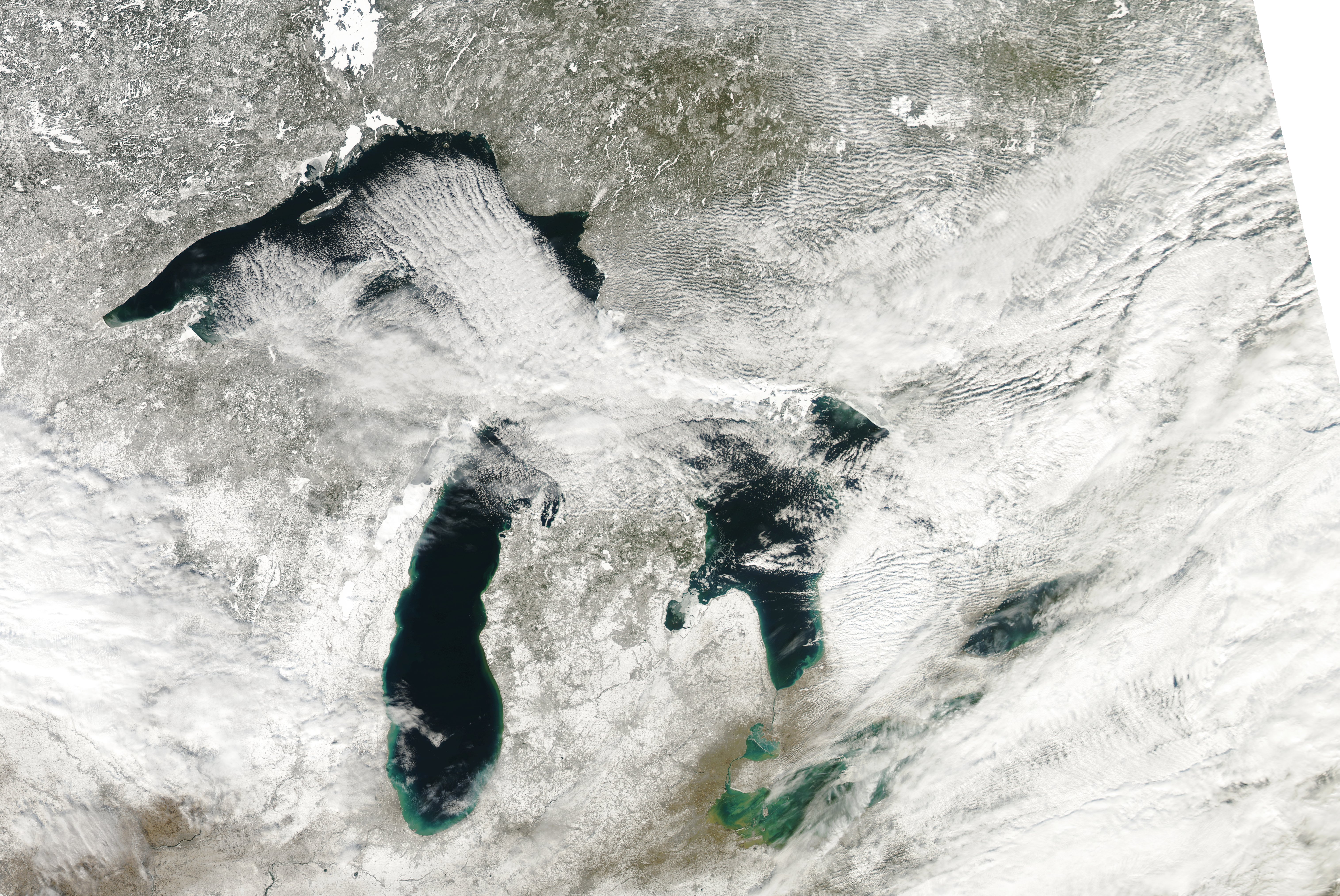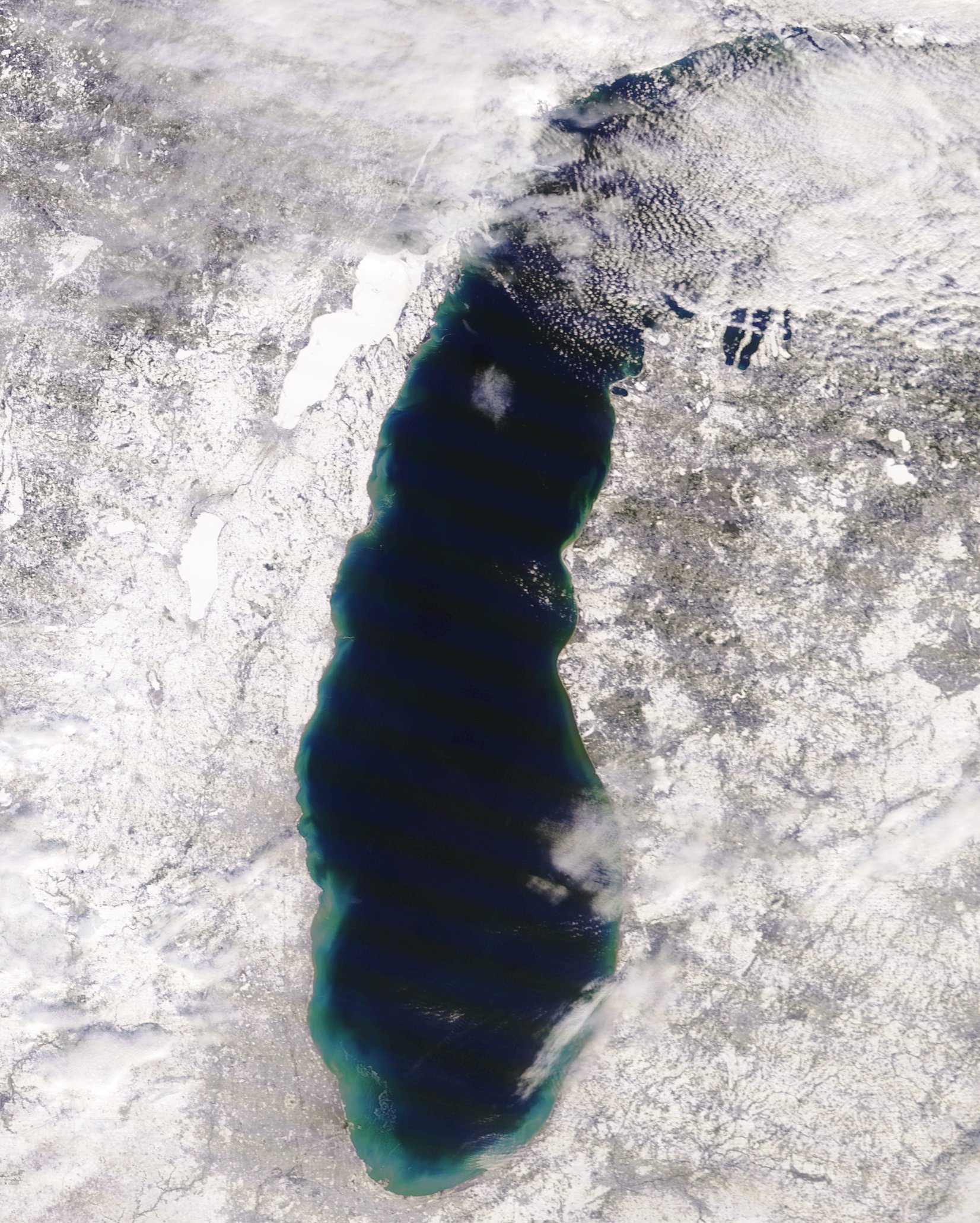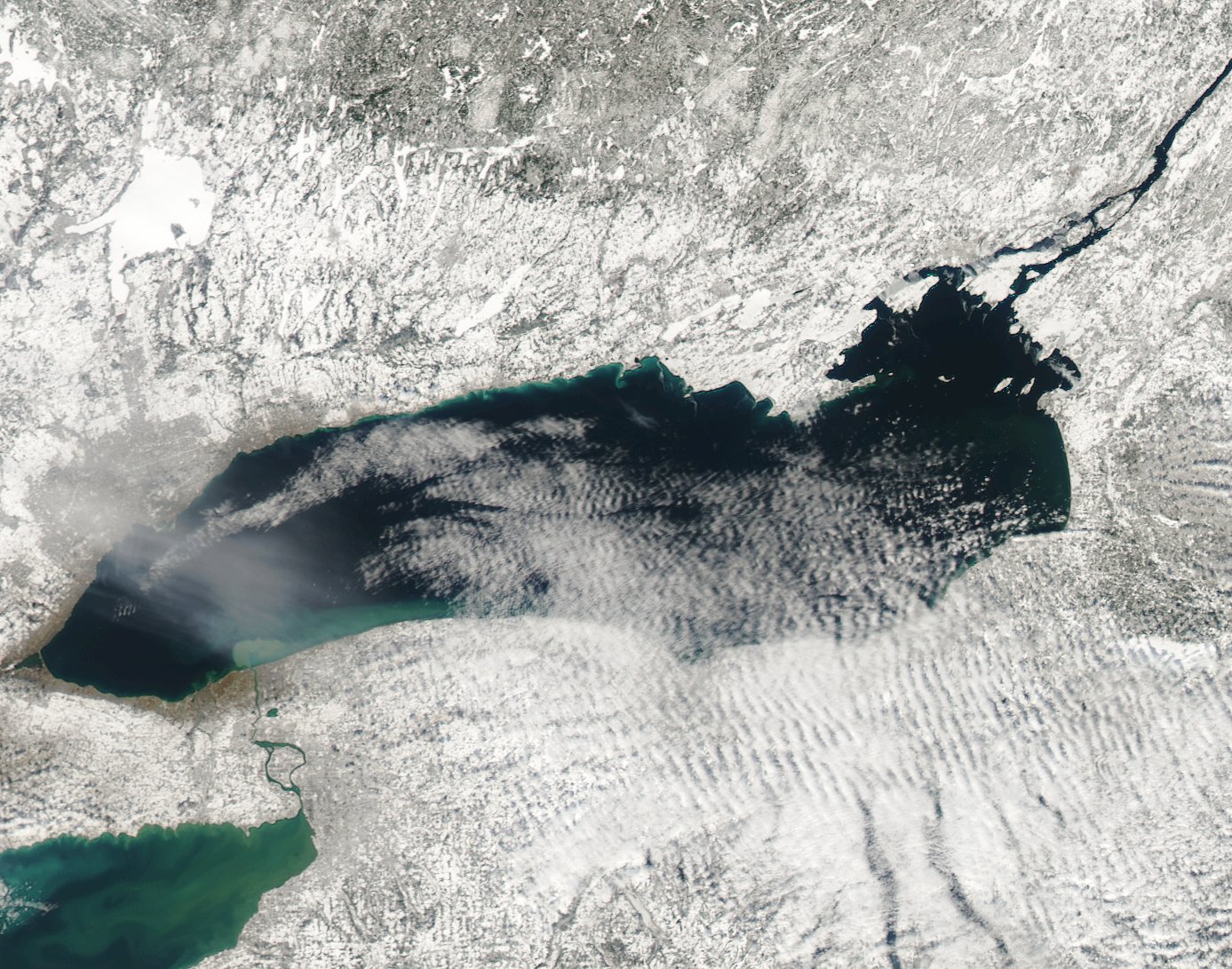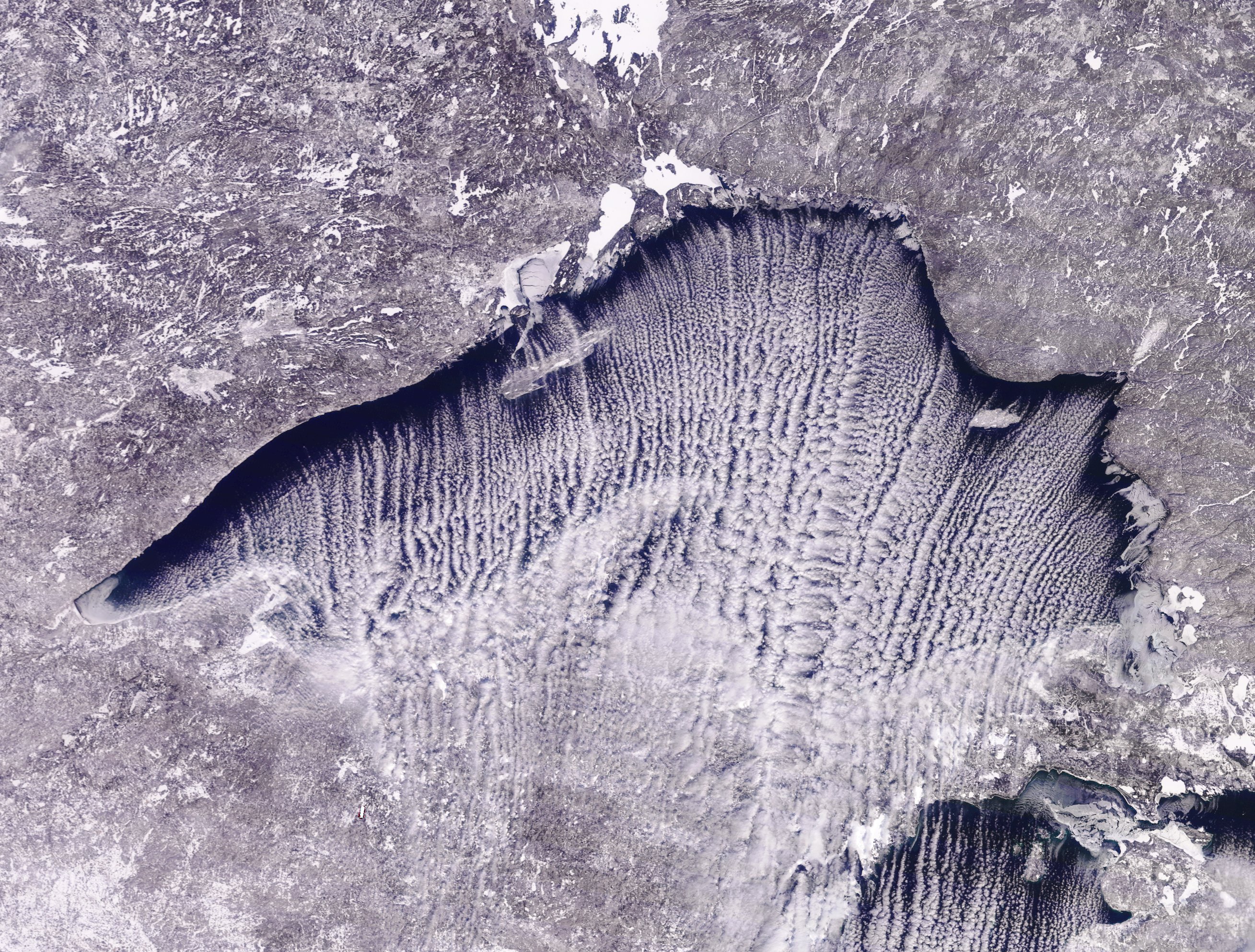You've probably seen some pretty high-definition satellite images of cloud cover when watching a weather forecast on TV.
Meteorologists can use weather satellite imagery to help forecast the weather, track severe thunderstorms, monitor winter storms, among many other things.
Some of the most incredible imagery of our earth, though, comes from something called MODIS. If you've never heard of MODIS, you likely aren't alone.MODIS stands for "Moderate Resolution Imaging Spectroradiometer," and is a key scientific tool aboard both the Terra and Aqua satellites that revolve around Earth.
Both Terra MODIS and Aqua MODIS view the entire Earth's surface every 1 to 2 days, acquiring data in 36 spectral bands, or groups of wavelengths, according to NASA. The result is beautiful imagery like what you see in this article. The details in these satellite images are impeccable.Here's what you can see in the images above:
- The deep blue color in the center of each Great Lake representing deep water
- The lighter blue shades on the outside of the lakes representing shallow water
- Incredible detail of lake cloud cover
- The white color showing fresh snow on the ground, with rivers and higher elevation areas noticeable





